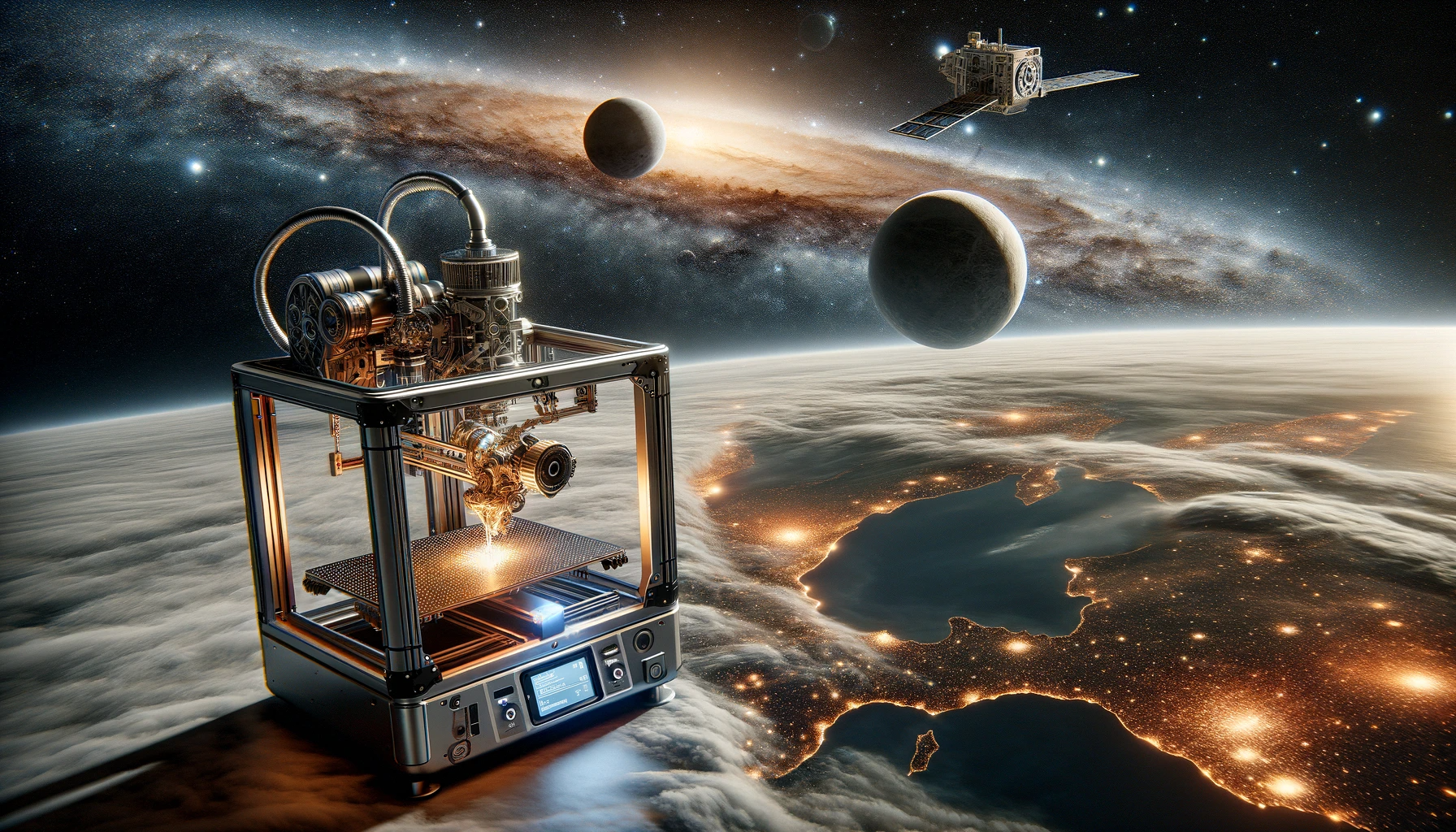3D Printing in Space: A Technological Revolution at the Frontiers of the Unknown

3D printing, already well-known to the general public on Earth, could solve numerous problems in Space and provide considerable flexibility to workers above our heads. Among other things, it could solve a major challenge of any expedition: resupply.
"I'll take 1kg"
Did you know that the cost of sending an object to the International Space Station (ISS) depends on several factors? It depends particularly on the choice of launch vehicle, its cargo capacity, and other mission-specific requirements.
Historically, the cost per kilogram to send cargo to the ISS with the American space shuttle was very high, estimated at about 20,000 to 40,000 euros per kilogram. Since the retirement of the space shuttle, the ISS has been resupplied by a variety of commercial and government launch vehicles, such as those from SpaceX (Falcon 9), Roscosmos (Soyuz and Progress), and others.
With the entry of private companies like SpaceX into the space launch field, costs have tended to decrease. For example, SpaceX has significantly reduced launch costs thanks to its Falcon 9 rockets. Exact figures vary, but estimates suggest that SpaceX could reduce the cost to about 2,000 to 3,000 euros per kilogram, or even less for certain missions.
It's important to note that these figures are estimates and can vary depending on many factors, such as payload volume, mission complexity, and contractual negotiations between space agencies and launch providers.
Paving the Way for Exploration
3D printing in space offers several advantages:
- Weight and cost reduction: 3D printing enables on-demand manufacturing of tools, parts, and even food in space, thus reducing the need to transport everything from Earth and decreasing launch weight and costs.
- Recycling and sustainability: Astronauts can recycle plastic waste into filament for 3D printing, reducing waste production and promoting sustainability in space.
- Customization and flexibility: 3D printing allows the production of custom parts and tools, offering flexibility for prototyping and manufacturing aerospace parts.
- Support for long-duration missions: The ability to manufacture essential products in space is crucial for long-term journeys to destinations such as the Moon or Mars, where resupply from Earth isn't feasible. Thus, printing stations could emerge. Projects aim to use lunar and Martian regolith to build structures, paving the way for space colonization.
Despite these advantages, challenges remain to be overcome, such as the effects of microgravity on the printing process and the need to ensure reliability and quality of 3D printed parts in space. NASA's in-space manufacturing project is leading the development of technologies and processes to enable on-demand manufacturing capability for long-duration missions such as Mars exploration or sustained human operations on the lunar surface.
Micro-what?
Microgravity, or apparent weightlessness, has a significant impact on fluids and materials. Under these conditions, gravitational forces are considerably reduced, leading to several effects on fluid behavior, for example:
increased capillarity: capillary forces become much more dominant compared to gravity. This means that liquids tend to climb more easily in small spaces, like cracks or tiny tubes. For example, in a thin tube, a liquid can climb much higher in microgravity than on Earth due to the predominance of capillary forces.
As a result, there are certain impacts on 3D printing:
- Absence of gravitational constraint: As explained previously, in the absence of Earth's gravity, material flow is primarily dictated by more local forces, such as surface tension and viscosity. This can affect how material layers are deposited and fused, requiring adjustments in printing parameters.
- Process stability: The absence of constant gravity can make the 3D printing process less stable. Vibrations and movements of the spacecraft or space station can disturb printing. Therefore, it's necessary to develop damping systems and control mechanisms to maintain process stability.
- Material fusion: In microgravity, material fusion and solidification can behave differently due to the absence of natural convection, which is normally caused by gravity. This can affect the quality of printed objects and thermal distribution during material fusion. In response to this constraint, materials like reinforced polymers (such as carbon fiber) are used for their high mechanical strength.
- Waste elimination: Managing waste produced by 3D printing in microgravity is a significant challenge. Material waste can float freely in the space station or spacecraft environment, requiring appropriate collection and management systems to avoid any negative impact on the confined environments of space stations.
Some notable projects:
West Virginia University is conducting experiments to understand how a microgravity environment affects 3D printing using titanium foam, a material with potential applications ranging from UV blocking to water purification. https://wvutoday.wvu.edu/stories/2023/10/30/to-advance-space-colonization-wvu-research-explores-3d-printing-in-microgravity
NASA obviously leads a program around printing processes in microgravity. https://3dprint.com/264425/deep-dive-into-3d-printing-in-microgravity-for-future-space-exploration/
Finally, on the ISS side, they aim to 3D print body parts, such as a robotic hand, exploring the technique of vision-controlled jetting https://www.freethink.com/space/3d-printing-in-microgravity

